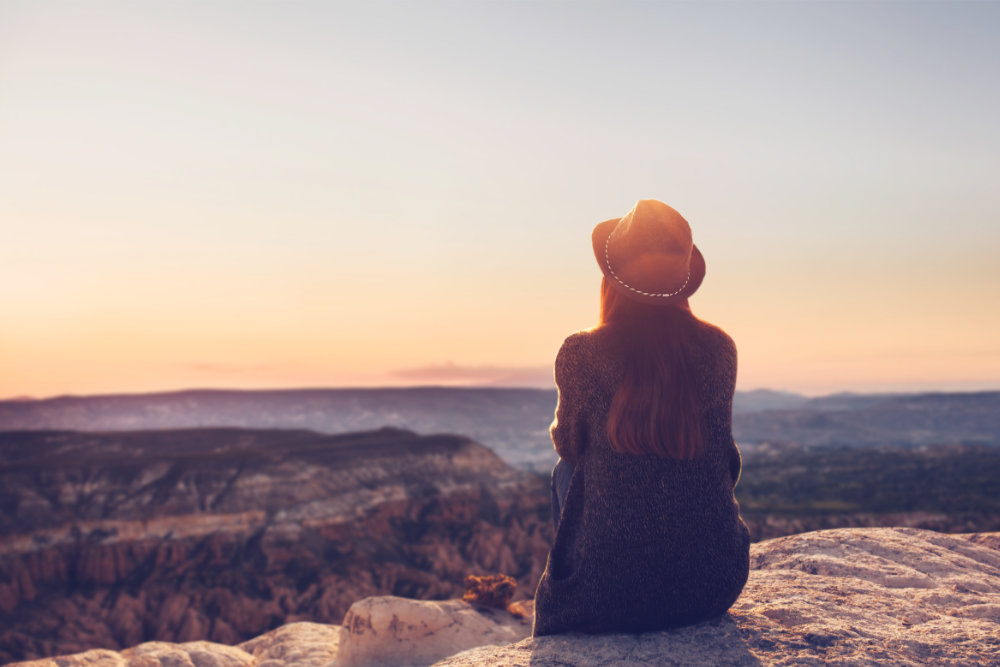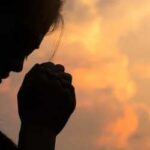Power in Silence
By Laurie F. Maffly-Kipp

The spiritual dance between solitude and connection. Learning to look inward and reach outward.
I’ve been thinking a lot about silence and solitude these days. Our lives in this time of pandemic are both oddly quiet and strangely louder than I’m used to. Or perhaps it is more accurate to say that our soundscapes have changed dramatically. Where we once heard the buzz of work patterns, social gatherings, and casual interactions in public spaces, we now hear rising voices of protest and the din of the cascading anxieties many of us feel within our own hearts and minds. Will this isolation ever end? Will life ever return to normal?
The writer Jane Brox describes the distinction between the solitude she sought at an artist colony, where she wrapped herself in the silence of unlimited time and space for creative pursuits, and the solitude of the quarantine in her small New England town. “This new solitude feels lean and hard,” she writes. “As I move deeper into it, I worry that it will replace all the subtle textures of the solitude into which I’ve grown over the last thirty years. And, hard as it is, I’m not sure where its borders lie. What is prudent and what is foolish. What must be endured, what can’t be endured. When it might end.” It is the formlessness of this solitude that makes it so disorienting.[i]
Different kinds of solitude have different qualities, Brox notes. Each has its own rhythms, its own voices, its own patterns. Some offer a stillness from the outside world, a suspension of our normal lives that allows us to focus our attention inward. Other kinds of solitude enable us to think more deeply about the world around us. And some just feel like punishment, isolating us from connections to each other and even, sometimes, to our own crowded thoughts.Solitude can sever, but it can also sanctify.
How do we take a forced solitude, such as the one we are currently enduring, and turn it into something more restorative? My own journey through these last months has taken me on a circuitous path, from productivity to isolation, and back to a different kind of generativity. The first weeks of lockdown didn’t bother me that much. I’m a writer and reader by profession, and often seek places that allow time for both. The suspension of much of my daily routine — no commute, no need for elaborate morning academic routines — seemed like a gift. My early-pandemic life played out like a stereotype of the privileged work-from-home existence: I revived my sourdough starter! I gardened earnestly for the first time in my life! I took more regular walks! I cleaned closets and hatched home renovation plans!
But sometime around week four I hit a wall. I missed the casual conversations in hallways, the routines of my office, and the ease of going out to lunch or dinner. I missed hugging my friends. I lamented that I couldn’t keep track of what day it was. I had days (or were they weeks?) when I honestly didn’t want to do anything.
The truth, I realized, is that my need for solitude is premised on connection — to other people, to a higher power that sustains me, and to purposeful activity geared toward the future. No one understood this intricate dance of solitude and connection better than medieval Catholic monastics. They built stone sanctuaries as refuges from the world, but also instituted a structure of community connections embodied in their worship and labor. One could retreat there, but not remain indefinitely. When Thomas Merton entered the Trappist Abbey of Gethsemani, a religious order that valued separation from the world and silence within the monastery, he petitioned to live in a hermitage secluded from anyone. Eventually he was allowed to do so, but the abbot resisted his pleas for many years, worrying that complete isolation would only increase Merton’s tendencies toward self-absorption. Even monks believe that too much isolation is a dangerous thing.
No one writes more beautifully of the complex interplay of isolation and connection than Kathleen Norris. If any place on earth was desolate, it was the corner of South Dakota where she found herself living in the 1970s — the small farming community of Lemmon. Yet within that vast, arid space she wrote of the rituals and routines that connected people to one another and to the earth. Norris wrote of finding the sacred in the mundane tasks of doing laundry and baking bread. These simple tasks of care changed her writing, her praying, and her outlook on the world: “what we think we are only ‘getting through’ has the power to change us, just as we have the power to transform what seems meaningless — the endless repetitions of a [church] litany or the motions of vacuuming a floor.”[ii]
So, too, can silence transform us. The composer John Cage famously said that “Silence is not acoustic. It is a change of mind, a turning around.” A conversion, if you will, as the early Quakers also believed. They taught that by sitting in silent communion, humans could listen for the voice of God. The acoustic ecologist Gordon Hempton has spent his career recording places where one can experience natural silence without human noise. “Silence is not the absence of something but the presence of everything,” he maintains. Through his work he hopes to train people to listen differently and to change their relationship to sound. Most recently, the meme “8:46” stands as a remarkable collective conversion, a memorialization of the silence of George Floyd’s final minutes that has powerfully reshaped societal responses to racialized policing.
I’m under no illusion that embracing the spiritual benefits of silence and solitude will make me like quarantine. But I now smile at the rituals I’ve developed around the mundane, quiet moments: I daily survey my flowers, appreciating their incremental growth; I enjoy seeing how my sourdough starter, a live organism that I have named, responds to various kinds of flour feedings; I’ve named the squirrels in our yard and greet them when I see them; I’ve learned more bird names and appreciate their delicate sounds. None of this will turn me into a monastic, but it connects me to things that I simply hadn’t paid attention to previously. It is a world transformed, in small ways.
Laurie F. Maffly-Kipp is the Archer Alexander Distinguished Professor in the Humanities at Washington University in St. Louis and the author of Setting Down the Sacred Past: African-American Race Histories.
This essay is part of a series called “Finding Faith in the Age of Anxiety.” It explores solutions that faith offers in countering the troubles of our time. Perspectives from various religious traditions are represented.
[i] Jane Brox, “The Riddle of Solitude in the Age of Coronavirus,” The New Yorker (May 16, 2020), at https://www.newyorker.com/culture/personal-history/the-riddle-of-solitude-in-the-age-of-the-coronavirus.
[ii] Kathleen Norris, Quotidian Mysteries, The: Laundry, Liturgy and “Women’s Work: Madeleva Lecture in Spirituality (Mahweh, NJ: Paulist Press, 1998), p. 82.



